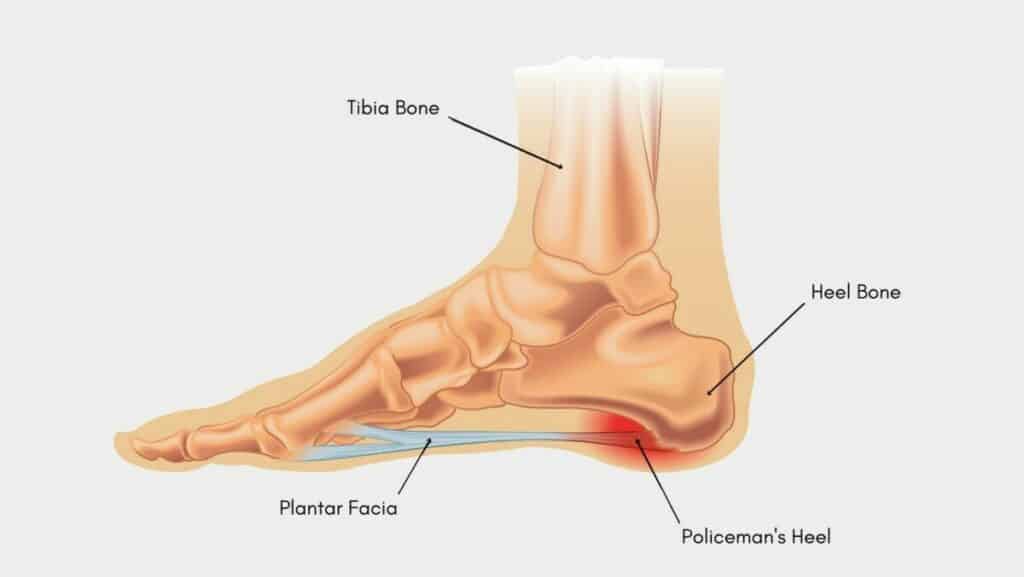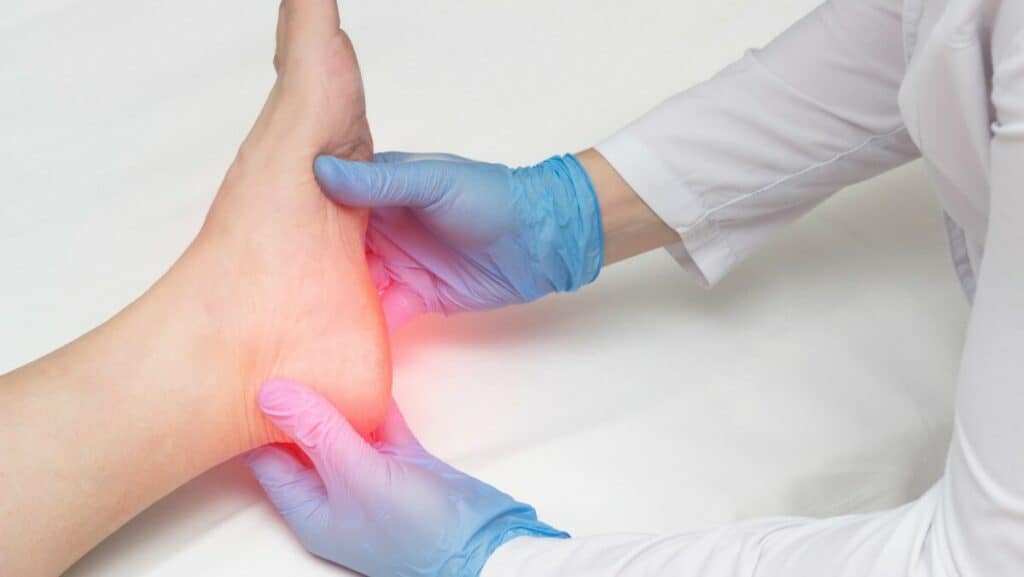Policemans Heel
- Best Asics Shoes for Flat Feet - October 25, 2024
- Best Running Shoes for Flat Feet - October 22, 2024
- Posterior Tibial Tendonitis - October 21, 2024
What is Policeman’s Heel?
Policeman’s Heel is also known as Plantar Fasciitis and is a condition that causes pain and inflammation on the underside of the heel bone and medial arch of the foot.
Policeman’s Heel affects a thick band of tissue called the Plantar Fascia, which provides stability to the underside of the foot. The Plantar Fascia becomes irritated if it is overloaded from repetitive walking, running, or prolonged periods on your feet, especially in stiff boots.

Policeman’s Heel Symptoms
Policeman’s Heel causes pain on the underside of the heel bone and arch of the foot when standing for long periods. Symptoms are often worse first thing in the morning or when walking after sitting for some time.
It is expected that the symptoms of a Policeman’s Heel are worse at the start of a walk or run and improve as the tissue warms up. However, in chronic episodes of Policeman’s Heel, the pain does not improve as the tissue warms up.
It is tender to press on the heel centrally or on the inner aspect of the heel bone and is often present alongside fat pad syndrome of the heel.
Policeman’s Heel Diagnosis
A Podiatrist or Physiotherapist can diagnose a Policeman’s Heel based on a patient’s symptoms and clinical tests such as palpating the heel bone.
Clinically, we look for a reduced knee-to-wall test and pain on palpation of the inner heel bone, and we try to rule out other possibilities, such as a calcaneus stress fracture or sural nerve pain.
If the clinician is uncertain of the diagnosis, they may refer the patient for an ultrasound or MRI scan to confirm the diagnosis and rule out other conditions of the foot.

How to cure Policeman’s Heel in 5 steps?
1: Offload the affected foot as much as possible. We understand that this can be difficult if your job requires you to spend a lot of time on your feet, but outside of work, think about using public transport, cycling or driving rather than walking to get around.
2: Anti-inflammatories are an effective treatment for Policeman’s Heel by reducing inflammation in the heel and pain levels. Gels such as Voltarol are effective, but make sure materials such as socks or bedsheets don’t touch the application area for at least 45 minutes to allow the gel to absorb.
3: Stretching and Strengthening exercises are one of the most effective forms of treatment for Policeman’s Heel. The stretches should be carried out 2-3 times daily, and the strengthening programme once daily.
4: Footwear and insoles are vital in treating a Policeman’s Heel. A supportive running shoe can be used for walking or running outside work to reduce the stretch on the Plantar Fascia. At the same time, Plantar Fasciitis Insoles can take the pressure off the Plantar Fascia inside your work boots.
5: There are 4 key signs that your Plantar Fasciitis is healing but, if the first 4 steps are unsuccessful, shockwave therapy is an effective treatment. Shockwave Therapy has growing evidence and is available privately and on the NHS.
We are specialists in treating foot conditions such as Policemans Heel and have experts in foot conditions in our clinic in Fulham, South West London.
Related Articles
Best Insoles for Plantar Fasciitis – Best Shoes for Plantar Fasciitis – What is Plantar Fasciitis
